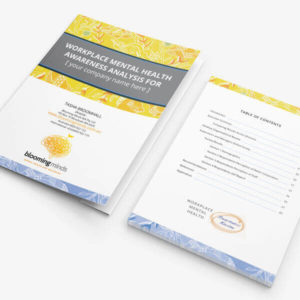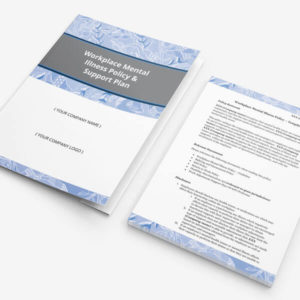Organisations today are ‘doing more with less’ and implementing ‘lean principles’. Doing so while maintaining a productive and vibrant workforce is a challenge.
Workplace Mental Wellbeing
Relentless change and pressure in workplaces have increasingly resulted in employees reporting higher levels of stress. Stress which negatively affects productivity.
Leaders
Leaders need to understand how to prevent, recognise and appropriately respond to mental health issues in the workplace, which includes unhealthy levels of stress. However, the responsibility doesn’t only sit with leaders; organisations as a whole need to take responsibility for minimising and appropriately responding to risks of psychological harm.
Different approaches
There seem to be distinctly different approaches that organisations take regarding mental health and wellbeing of their employees.
Some organisations are still embryonic in their efforts. They have not assessed their risks and have not investigated appropriate controls. Some organisations are stuck in a cycle of simply reacting to issues as they arise.
Start with governance
Thankfully, every year, more organisations seem to have a balanced approach, starting with organisational governance, the skills of their leaders and the strategies to support individuals.
However, it’s not a case of the more you do, the better.
Find out more about developing a mental health strategy map for your organisation.
Optimise workplace performance
To optimise workplace performance, it is imperative to create a sustained program that builds capacity within your organisation to recognise and support mental wellbeing. But this needs to be achieved within appropriate boundaries; to not be invasive and risk intruding in employees personal lives.
Increasing trend
There is an ever-increasing trend towards apps and programs (paid for by the organisation) that provide psychometric testing to determine any diagnosis an employee might have. The results of which are then used to encourage the employee to access support if needed.
However, is this an organisations responsibility? Are there potential risks regarding gathering, storage and use of private employee medical information en-masse?
Privacy
If an organisation provides such a program for employees, they need to investigate where the data is stored.
Is it on an Australian or international server? What are the privacy controls instigated by the provider so that your employee data is secure and not at risk of being sold?
Efficacy and validity
Additionally, organisations need to investigate the efficacy and validity of such interventions. Many of these programs claim to provide psychometric testing, however not all the tests they use are designed for electronic delivery and interpretation. Some are only validated for use when administered by an appropriately qualified practitioner who then interprets the results.
If organisations do adopt such programs, they need to then communicate all the conditions around data use, access, and the appropriateness of the tests being used.
Yet, while more is not necessarily better, approaching mental health and wellbeing systematically is important.
What organisations should consider to create a culture of positive workplace mental wellbeing and to minimise risk
Governance
- review relevant ISO Certification and Australian Standards for compliance in demonstrating competence and awareness
- development and maintenance of a risk register with an appropriate hierarchy of controls
- development and maintenance of a Mental Wellbeing Committee (that is resourced),
- review policies and procedures to consider the relevant inclusion of mental health and wellbeing in relation to health and safety, privacy, non-discrimination, Code of Conduct, and values statements.
Leaders
- development of the skills to recognise and appropriately respond to mental health issues,
- development of the skills to be able to identify risks and apply controls,
- development of the skills to be able to manage and access resources in a crisis.
All employees
- development of stress management skills,
- development of positive communication skills,
- development of personal mental wellbeing skills.
The goal should be to recognise the impact of mental health issues in the workplace and to help organisations to balance the employee’s needs with the organisation’s operational needs.
Mental health guide for leaders
To learn more, get your copy of BLOOM At Work: A Mental Health Guide for Leaders.



